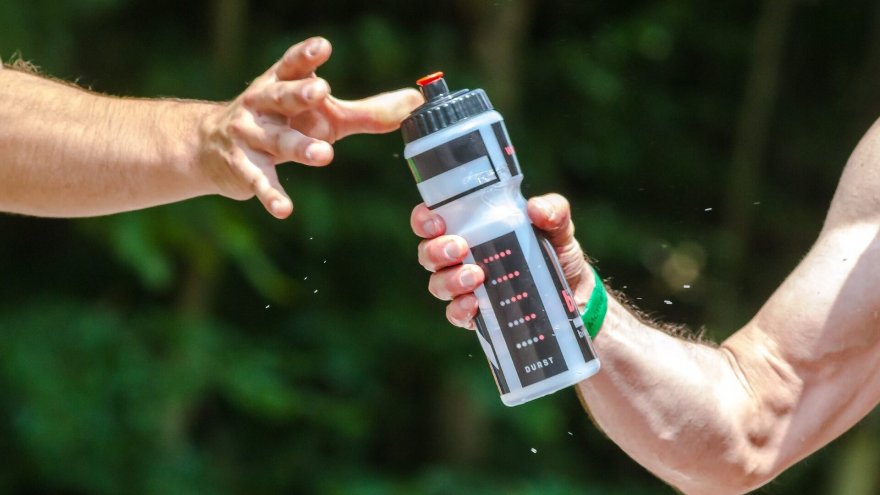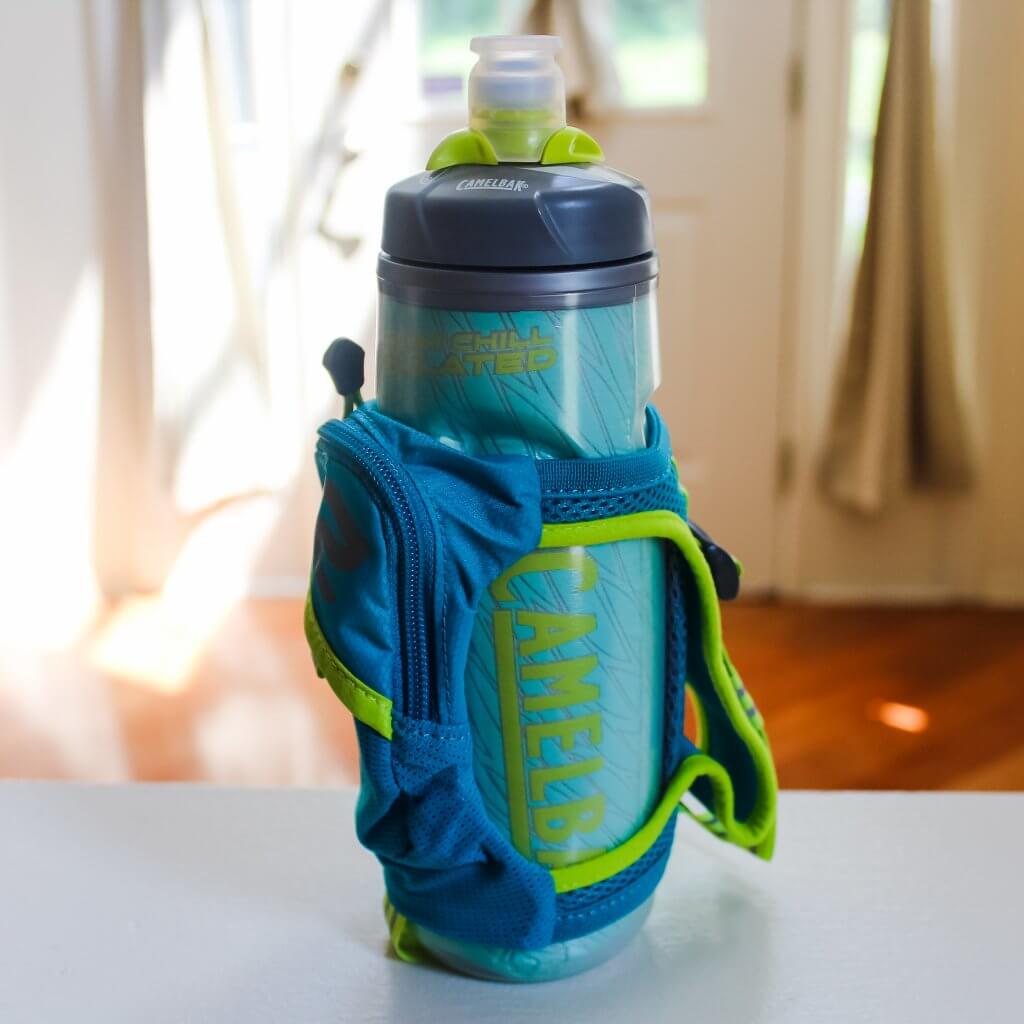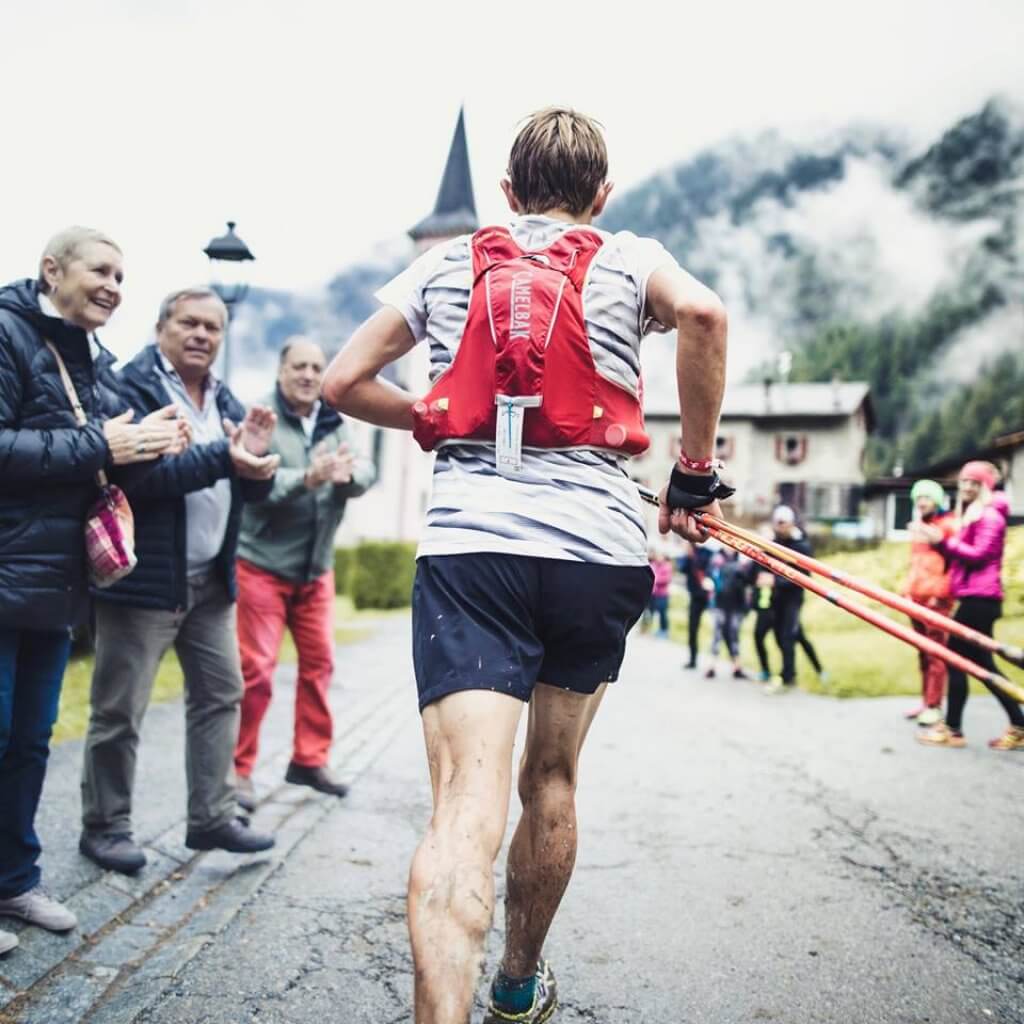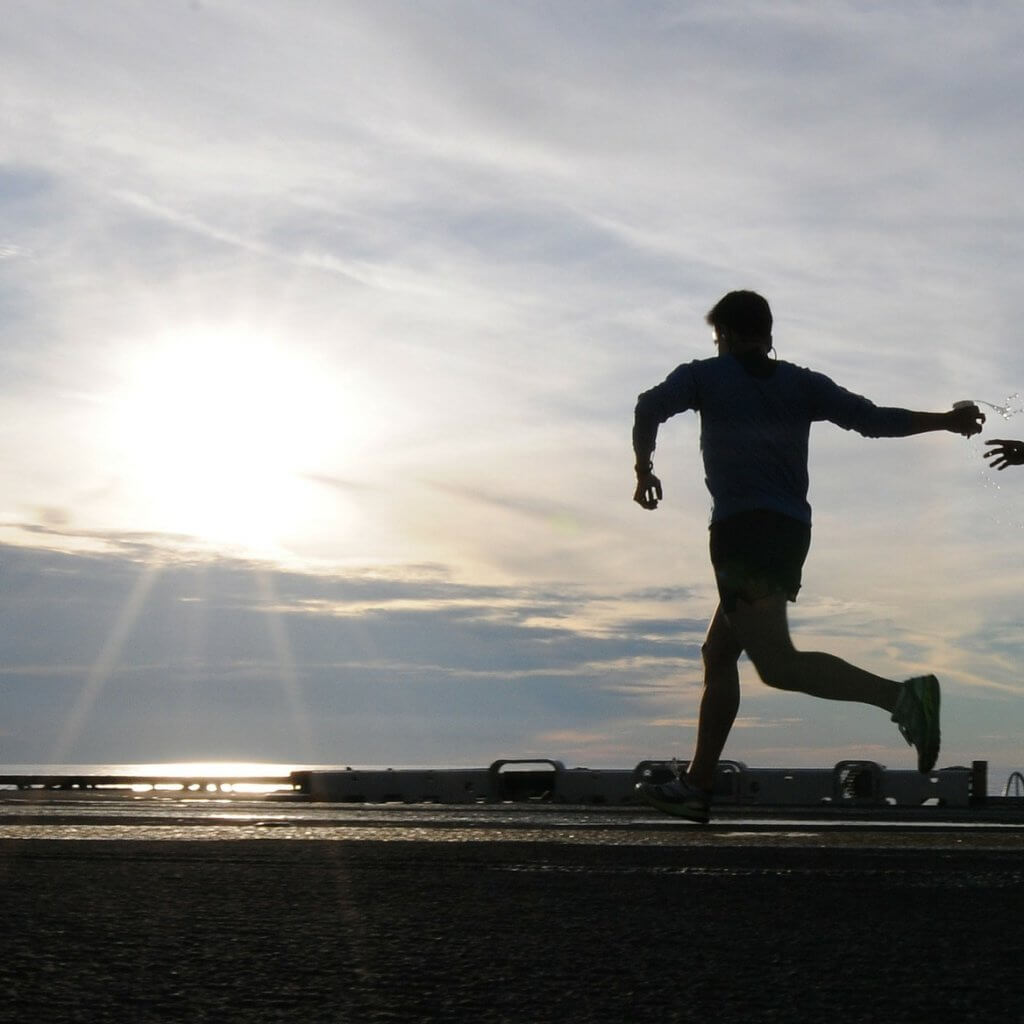The Best Ways To Carry Water During A Run

The sun beats down as beads of sweat slides down the side of our face. We pick up our pace, and the perspiration becomes more pronounced. But no matter how wet our bodies are, the mouth gets drier. We swallow hard, flap our tongue around and suddenly feel like we are in the middle of the desert. We would do anything at this moment for a refreshing taste of water mid-run. The problem is that many runners don’t like to carry water with them during their runs.
Carrying water can feel awkward or even annoy the runner. Many don’t like that their route doesn’t include a trash can, so tossing their plastic bottle isn’t an option. And many sports water bottles are large and heavy, making them hard to hold. Gulp.
However, there are lots of products on the market made specifically to address this problem. Welcome to the wonderful world of water products for runners.
Handheld Bottles
Handheld bottles are the best option for short runs. They allow the runner to have water on hand—quite literally—and make it easy to carry thanks to its strap design that allows for a close to the hands-free experience. Instead of needing to clench onto the bottle, these designs allow the strap to run across the back of the hand so the fingers are free.

There are simple and inexpensive options like the BottleBand, as well as options like the R-Gear Come To Grips Bottle sold by Road Runner Sports that include a Camelback insulated bottle for keeping the water cold, as well as space for GUs and car keys. Another good option is the Amphipod Hydraform Handheld Thermal-Lite, which has an ergonomic design and a non-slip grip that can even hold your phone.
The only downside to handheld bottles is some believe it throws off balance and weight, which can mess up form. Still, these are a good choice for those short to mid-distance runs especially in the heat.
Hydration Belts
Hydration belts are the ideal choice for those who want to go completely hands-free. These are great for trail races where the runner might need to carry a few extra items. They generally include slots on each side of the hip for water bottles (many come with the bottle), allowing the runner to have plenty of water. This is great for those training for a half or full marathon. Nathan Trail Mix is among the best since it has elastic cords to carry extra items like a lightweight jacket and doesn’t bounce much. Options from Fitletic, CamelBak and Fuelbelt are all worthy buys as well.
There are two problems with hydration belts for some. The main issues with this option are some belts tend to slide and ride up, and bounce when running. This can be awkward, distracting and not comfortable. Hydration belts can also become heavy, depending on what the runner is carrying with them.
Hydration Packs
Hydrations packs solve both problems when it comes to wanting to be hands-free and not wanting to feel the bounce belts can give. A hydration vest is like a backpack but features a water reservoir (also known as a bladder) and a tube that is connected to so that the runner can sip the water much like a straw.
Hydration backpacks come in different sizes, so make sure that the bladder can hold enough water for the distance needed. Bladders can hold up to three liters of water, great for ultra runners. The size of the pack also means some backpacks are large and can thus be heavier.

Runners should try on the hydration pack before buying since some can cause chafing or be uncomfortable if not fitted properly. It should be the length of the torso and be snug around the hips.
The High Sierra Propel 70 and Osprey Raptor 14 are among the best for runners.
Why We Need To Carry Water
Even though many don’t run with water, sometimes it is a necessity. Short runs generally don’t require a runner to hydrate. But this also depends on the individual runner and their level of fitness. Some beginners need water during a short run, while more seasoned athletes can go many miles without. There is no shame in needing to carry water, especially in the hot summer months when dehydration and heat stroke is a major concern during physical activity.
Runners can lose anywhere from 18 to 35 fluid ounces of water per hour. This is why properly hydrating before, during and after a long distance run and a hot and humid run is important.
Besides needing water to stay hydrated, runners often need water when ingesting their fuel. GUS, sports beans, and energy chews generally require the runner to consume it with water. If not, cramping and upset stomach can happen. These gels and chews are often very sweet and consuming them in large quantities lead to the belly aches.

The good news is that carrying water for many is just for training and running for fun. Many races provide water and sports drinks at its aid stations along the course. However, some trail races require the runner bring their own water bottle. So getting used to carrying water can be a good idea.
Check out what our experts have to say about this question.
Sources
- , How to Carry Water on a Run or During a Race, Running Website
- , How to Choose Hydration Packs, Sports Website
- , How Much Water Should a Runner Drink: Water Strategy and Other Tips, Running Website
Latest Articles
 Is Running on a Treadmill Easier Than Running Outside?Runners have their own preferences, whether it is treadmill running, running outside on the road, or exploring trails. So...
Is Running on a Treadmill Easier Than Running Outside?Runners have their own preferences, whether it is treadmill running, running outside on the road, or exploring trails. So... Is It OK to Use Trail Running Shoes on the Road?While trail running shoes can be used on roads, especially in situations where a runner encounters mixed terrains or pref...
Is It OK to Use Trail Running Shoes on the Road?While trail running shoes can be used on roads, especially in situations where a runner encounters mixed terrains or pref... How to Fix Sore Quads After Running?Rest, ice, gentle stretching, and over-the-counter pain relievers can help soothe sore quads after running. Also, ensure ...
How to Fix Sore Quads After Running?Rest, ice, gentle stretching, and over-the-counter pain relievers can help soothe sore quads after running. Also, ensure ... 10 Fruits With The Most Electrolytes to Replace Sports DrinksThese fruits are high in electrolytes such as potassium, magnesium, and calcium, essential for hydration, muscle function...
10 Fruits With The Most Electrolytes to Replace Sports DrinksThese fruits are high in electrolytes such as potassium, magnesium, and calcium, essential for hydration, muscle function...

